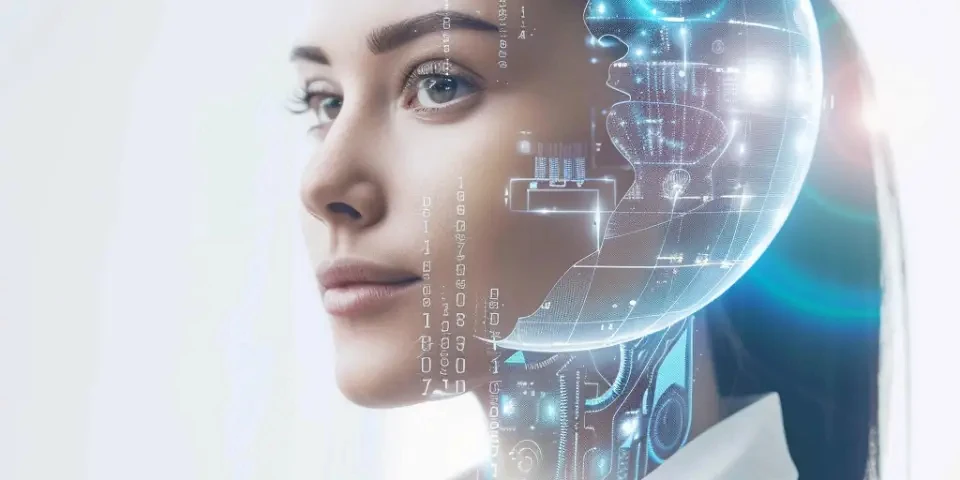Outpace the Curve AI-Generated Typefaces for Graphic Design
In the ever-evolving world of graphic design, staying ahead of the curve is crucial. From color schemes to layout choices, every design element plays a vital role in creating visually captivating experiences. Typography, in particular, holds immense power in conveying messages and evoking emotions. To keep pushing the boundaries of design, designers are turning to AI-generated typefaces. In this article, we will explore the potential of AI-generated typefaces and their impact on the future of graphic design.
1. Creative Freedom and Diversity
AI-generated typefaces offer an extensive range of possibilities, empowering designers to break free from traditional boundaries. With AI algorithms, designers can create unique typefaces and experiment with various styles, evoking different emotions and aesthetics. Gone are the days of relying solely on existing fonts - AI-generated typefaces provide a new level of creative freedom and diversity.

Whether it's a futuristic geometric design or a playful handwritten typeface, AI algorithms analyze vast amounts of existing fonts and generate new, innovative variations. This enables designers to tailor typefaces to specific projects, ensuring a cohesive and personalized visual language.
2. Time Efficiency and Streamlined Workflow
Traditionally, creating custom typefaces from scratch can be a time-consuming process. Designers have to meticulously design each letter and character, taking into account kerning, line spacing, and other typographic principles. However, AI-generated typefaces simplify and expedite this process.
Tools like Fontjoy and FontStruct use machine learning algorithms to analyze existing typefaces, identify patterns, and generate new typeface variations. Designers can browse through the generated options and fine-tune them effortlessly. This streamlines the workflow, allowing designers to focus on other crucial aspects of the project.
3. Enhanced Accessibility and Inclusivity
Typography plays a pivotal role in accessibility and inclusivity. AI-generated typefaces can bridge the gap by offering a broader range of typeface options that cater to diverse needs.
For example, some AI algorithms can generate typefaces specifically designed for dyslexic readers. These typefaces use various techniques, such as increased character spacing and unique letterforms, to enhance readability for individuals with dyslexia. By leveraging AI-generated typefaces, designers can create more inclusive designs that cater to a wider audience.
4. Endless Iterations and Adaptability
In the dynamic field of graphic design, trends come and go. AI-generated typefaces offer adaptability and quick iterations, allowing designers to effortlessly keep up with the latest design trends.
Designers can easily modify and iterate AI-generated typefaces to align with evolving brand identities or project requirements. If a specific style becomes outdated, designers can generate alternative variations without starting from scratch. This flexibility allows for timely adjustments and ensures that designs remain relevant and engaging.
5. Combination of Tradition and Innovation
AI-generated typefaces blend the traditional craft of typography with innovative technology. By analyzing existing fonts, AI algorithms learn the intricacies of typography and generate new typefaces that retain a sense of craftsmanship.
This combination of tradition and innovation opens up new possibilities for designers. They can embrace the rich history of typography while pushing the boundaries of design, resulting in visually striking and technically advanced typefaces.
FAQs
Q1. Are AI-generated typefaces suitable for all design projects?
A1. AI-generated typefaces can be used in a wide range of design projects. However, their suitability depends on the project's specific requirements and desired aesthetics. AI-generated typefaces work exceptionally well in projects where uniqueness and creativity are valued.
Q2. How can AI-generated typefaces enhance brand identities?
A2. AI-generated typefaces can give brands a distinct and memorable visual identity. By creating custom typefaces that align with brand values and characteristics, companies can differentiate themselves from competitors and establish a strong brand presence.
References
- Duffy, L. (2020). AI-generated typefaces: a new frontier in typography?. Interactive Design Institute.
- Kuo, R., & Zhu, Y. (2019). Designers Log Their Own Headshot Portraits with AI-generated Typefaces. In Proceedings of the 2019 CHI Conference on Human Factors in Computing Systems.
Explore your companion in WeMate